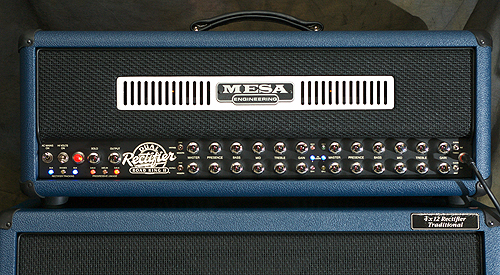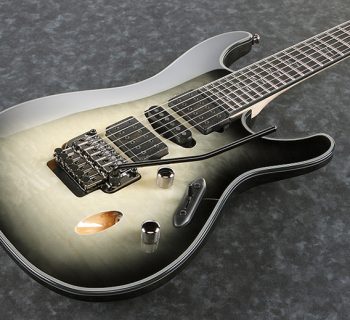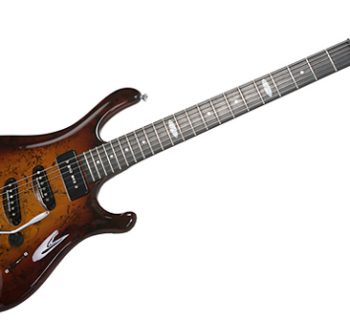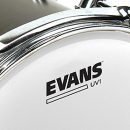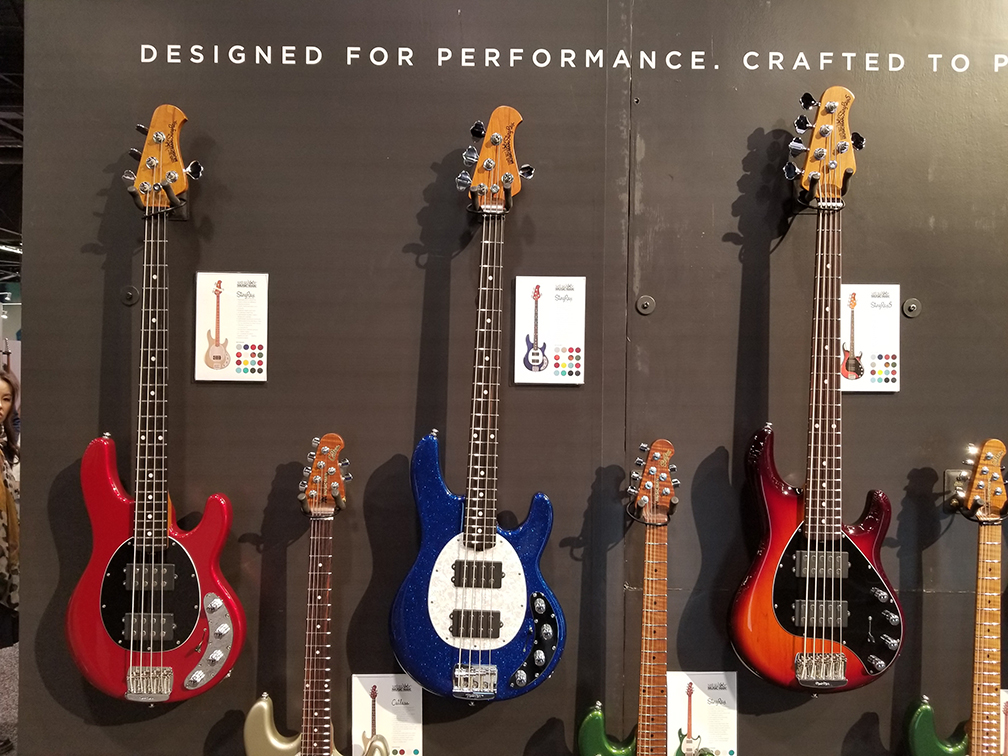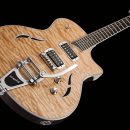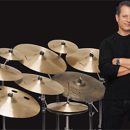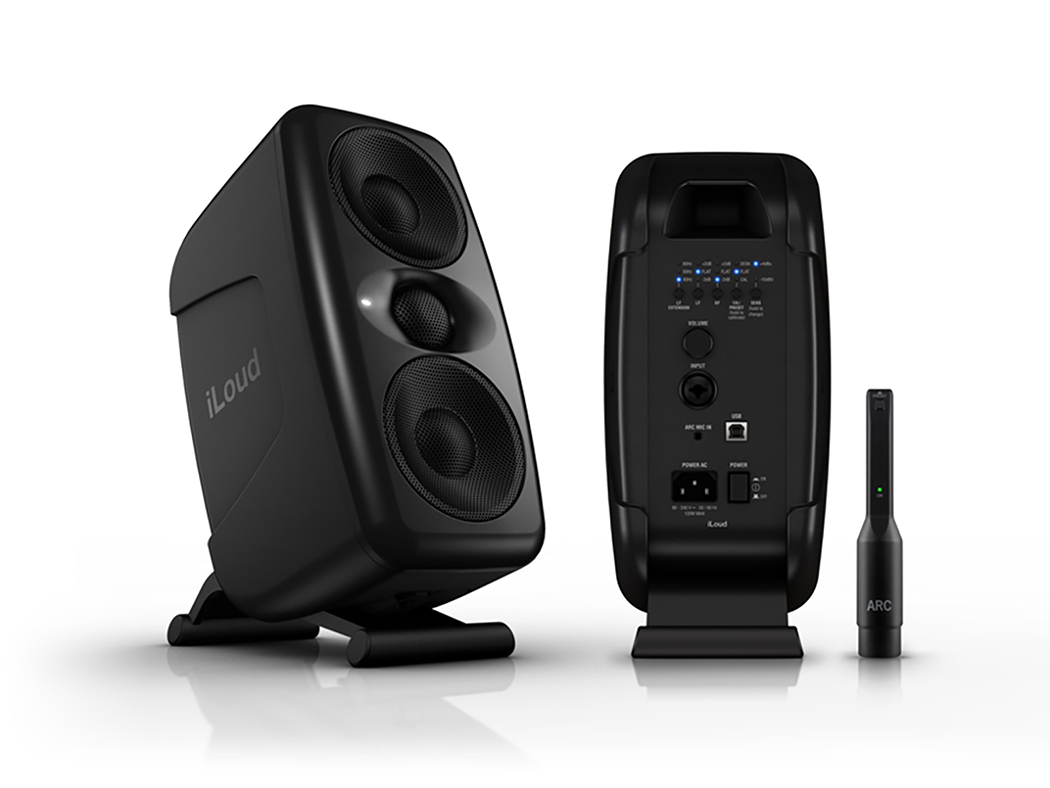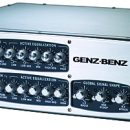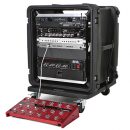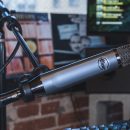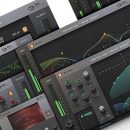 Mesa/Boogie wowed us with the Lone Star. For seekers of vintage tone, it offered a splendid palette of 6L6-based colors. The Stiletto Ace came into our studios next, serving up a healthy dose of EL34-based rock tone. But nothing really prepared us for an amp as capable as the Road King Series II.
Mesa/Boogie wowed us with the Lone Star. For seekers of vintage tone, it offered a splendid palette of 6L6-based colors. The Stiletto Ace came into our studios next, serving up a healthy dose of EL34-based rock tone. But nothing really prepared us for an amp as capable as the Road King Series II.
Don’t be misled by its Dual Rectifier moniker – this incredibly versatile amp is packed with the widest arsenal of tone we’ve ever experienced in a single tube amp. Vintage classic rock and blues? No problem. Sparkling clean pop tones? Ditto. Modern metal? Of course! American tone or British? Take your pick, as the Road King serves them both up. In fact, it’s entirely possible that based on how you configure your Road King, people will more likely assume your tone is coming from vintage Mark series amps rather than a modern day Rectifier.
| Category | Value | Rating |
| Features | 20% | |
| Usability | 25% | |
| Sound | 25% | |
| Documentation & Support | 10% | |
| Price | 20% | |
| OVERALL RATING = 3.7, which earns it a WIHO Award. 3.6 stars or better: Outstanding, WIHO Award 3 stars or better: Worth considering 2 stars or better: Suited to specific needs 1 star or less: Not recommended |
||
Not only can you assign 6L6 or EL34 power tubes (or both) on a per-channel basis to this four-channel wonder, but cabinet switching enables you to route different channels through different power amp sections into different unmatched speaker cabinets. Imagine your first channel being set to a classic American tweed sound with 100W of 4x6L6 power driving a 4x12 closed-back cabinet while your second channel is set for a British tone, 50W of 2xEL34 power, driving a 2x12 open-back cabinet, and you begin to see some of the mojo this amp possesses. In fact, Mesa/Boogie’s optional Road King cabinets offer both closed- and open-back speakers in a single cabinet (with multiple connectors to facilitate this kind of switching within a single cabinet).
The original Road King received rave reviews by virtually everyone who could afford it, but Mesa/Boogie wasn’t content to leave well-enough alone. A few significant upgrades took an already excellent amp and made it significantly better than the original:
- All voicings were improved on Channels 1 and 2. Mesa/Boogie claims a better balance between the Clean and Fat modes, and the Tweed and Brit modes were significantly improved. Most of the updated clean voicings were derived from the Lone Star series, while inspiration for the revamped Brit mode came from work on the Stiletto amps.
- The Reverb was also updated with circuitry from the Lone Star. We thought the Lone Star possessed the best sounding clean tones and Reverb ever built into a Mesa/Boogie amp, so finding them transplanted to the Road King Series II was particularly exciting.
- The effects loops were improved. Where the original Road King had one parallel and one series loop, the Series II features two effects loops wired in series.
Not since the Mesa/Boogie TriAxis/2:Ninety combination has an amp given us so many sonic options, but the Road King improves upon that rack-mounted classic with cleaner cleans, heavier rectifier tone, and vintage EL34 tones added to the mix. Really, if you seek the clean tone from a Fender, the classic rock tone from a Marshall, and the crunch of a Dual Rectifier, the Road King will deliver sounds that are music to your ears.
If you are a music producer or studio owner, this is the amp to have for recording. There are so many sonic possibilities featuring true, all-tube circuitry, that it will rapidly become your go-to recording amp.
Mesa/Boogie has been on a roll, releasing some of their greatest amps ever over the past few years. The Road King Series II may be the ultimate refinement of their amp technology, and we loved it so much that we had no choice but to replace our TriAxis rig with the new ruler of the Boogie Kingdom.
Features
- Four channel, fixed-bias, all-tube amp with seven distinct voicing options. Channel 1 = Clean, Fat or Tweed, Channel 2 = Clean, Fat or Brit, Channels 3 and 4 = Raw, Vintage High Gain or Modern High Gain. The clean channels in the Road King Series II feature voicings derived from the Lone Star series (plus the Brit mode was influenced by the Stiletto amps), while channels 3 and 4 feature voicing from the Dual Rectifier (plus additional higher-gain tones).
- American and British tone in one amp! 6x12AX7 preamp tubes, 2x5U4 rectifier tubes (and solid state diode rectification, too), 4x6L6 and 2xEL34 power tubes. Mesa/Boogie’s Progressive Linkage technology enables you to power the amp from a choice of 2x6L6, 2xEL34, 2x6L6+2xEL34, 4x6L6 or 4x6L6+2xEL34 for power ratings of 50, 100 & 120 Watts respectively, on a per-channel basis!
- There are at least five distinctly different sounding preamps in the Road King, and three different sounding power amps, not counting various settings that are more subtle variations on these primary sound-shapers. Throw in all of the voicing options and you end up with as many as 140 possible combinations of tube selections and rectification methods… before you even get to adjust tone controls or gain!
- Cabinet switching on a per-channel basis. The flexibility in power output and multiple speaker selections is really unprecedented.
- Real tube Reverb – the same reverb as found in the Lone Star amp.
- Two effects loops, each wired in series, footswitch selectable. True hard-bypass removes the effect loops (and two 12ax7s) from the signal path. This is also an improvement over the original Road King, which offered one parallel and one series loop.
- Each Channel features independent Gain, Bass, Mid, Treble, Presence, Reverb level, five-position Progressive Linkage power tube selection, choice of rectification type (Diode or Tube Tracking), Speaker Output (Speaker Out A, B or A+B), FX Loop 1 and 2 selection, and Output Level control.
- Solo level control that ads user-adjustable volume boost without an increase in gain for soloing.
- Bold/Spongy “Variac” switch reduces power throughout the amp in order to help achieve the classic “brown” sound.
- External switching jacks for Channels 1, 2, 3, 4, Solo, Reverb, Loop 1 & Loop 2 enable interfacing with third-party switching systems.
- External trigger jacks enable control of Pulse or Latching devices. For example, you could use this feature to start/stop a drum machine or sequencer from the Road King’s footswitch. [Editor's Note: As of September 2006, the Road King Series II v2 has started shipping. This feature has been replaced with a Tuner output, discussed at the end of this review in our Other Comments section.]
- King Controller II footswitch (included) features nine buttons: Channel 1/ 2/3/4, External Trigger, Reverb, Loop 1, Loop 2, Solo)
Usability
Our beautiful looking Road King Series II came dressed in blue bronco vinyl with black cloth grill coverings and black piping, along with a matching Rectifier Traditional 4x12 cabinet. [Note: This cabinet has been renamed for 2006 the Stiletto Traditional cabinet but is functionally identical.] After Senior Editor Matt Pinson’s love affair with a purple paisley-patterned, leather-clad Lone Star, Mesa/Boogie knew that sending us a typical black-wrapped amplifier would be too routine. Okay, so perhaps we mentioned that I love the color blue!
With so many controls, operation of the Road King can seem quite involved at first – it’s not just a plug-in-and-go affair until you’ve dialed in your primary tones. Fortunately, Mesa/Boogie did a very good job with the placement and layout of controls, and operation is quite intuitive once you’ve spent a few minutes looking things over.
 Many of the settings for individual channels are located on the rear of the amp – things you shouldn’t need to adjust on a regular basis such as Reverb level, tube selection, speaker selection, and rectification type. The channel strips, as Mesa/Boogie refers to them, are clearly identified on the rear of the unit.
Many of the settings for individual channels are located on the rear of the amp – things you shouldn’t need to adjust on a regular basis such as Reverb level, tube selection, speaker selection, and rectification type. The channel strips, as Mesa/Boogie refers to them, are clearly identified on the rear of the unit.
When creating sounds, we found it made the most sense to start at the rear of the amp choosing power tube selections, rectification method, and Reverb level (typically we just placed it at 50% to start) for each of our four channels. Once we had our channels configured on the rear, we then turned our attention to setting the tone controls on the front.
Status lights on the front of the amp showed us the tube selections and rectification method being used on each channel, so there was no need to look at the back of the Road King if we forgot what our channel strip settings were.
Controls for each channel are laid out in logical order on the front of the amp. Each channel has its own volume control, and then the amp itself has a dedicated master volume control and Solo level control. It was very easy for us to balance the volume level of our four channels, even when using different selections of power tubes (resulting in different power ratings for each channel).
From a testing and experimenting perspective, the Road King offers unprecedented ability to compare and contrast the influence that different tube selections make on your sound. Because some modes are duplicated among the channels, we were able to set two channels to identical settings but run one with 2x6L6 and the other with 2xEL34 to focus on sonic differences (and then, of course, try unique options such as combining 6L6 and EL34 tubes together). The cabinet switching also enables you to easily compare the sound of open and closed-back cabinets, or different brands of speaker, though in our testing we didn’t have any open-backed cabinets available for comparison.
Based on feedback from users of the original Road King, Mesa/Boogie removed the parallel effects loop and replaced it with a second serial loop. More players today prefer their loops wired in series and use the wet/dry mix controls in their effects to control the percentage of guitar signal influenced by their effects. This makes it easier to use vintage effects products that lack kill dry features, and if you only have a few pedals in your arsenal, you can wire them into the effects loops and turn them On/Off from the King Controller.
Additionally, the original Road King enabled user selection of pentode or triode mode when running through the EL34 power tubes, but users never embraced the triode setting. In the Road King Series II, this switch was eliminated – the EL34 tubes run in pentode mode at all times.
For guitarists in search of ultimate tone purity, those who scoff at the notion of effect loops (and effects), Mesa/Boogie provides a Loop Bypass setting on the rear of the Road King. This hard bypass removes two 12ax7 tubes from the signal path, along with the effects loops, the master Output volume, and the Solo volume controls. What you’re left with are four completely independent amps, each with its own volume/gain/tone controls (of course). We think this is a needless feature as it bypasses the fantastic Boost feature we all love Mesa/Boogie for with no sonic difference that any reasonable pro-level musician or recording engineer would ever notice.
 The King Controller II foot controller worked great. At 24” long, the heavy-duty metal switches were spaced far enough apart for the widest of motorcycle boots, but worked just as well with our running shoes. Controls on the footswitch include: selecting each of the four channels, turning each effects loop On/Off, Reverb On/Off, Solo boost, and the external trigger. A form-fitted slipcase is provided for slight protection during transit. [In the case of the updated Road King Series II v2, the Ext Trig button has become a Mute switch for use while tuning.]
The King Controller II foot controller worked great. At 24” long, the heavy-duty metal switches were spaced far enough apart for the widest of motorcycle boots, but worked just as well with our running shoes. Controls on the footswitch include: selecting each of the four channels, turning each effects loop On/Off, Reverb On/Off, Solo boost, and the external trigger. A form-fitted slipcase is provided for slight protection during transit. [In the case of the updated Road King Series II v2, the Ext Trig button has become a Mute switch for use while tuning.]
Cabinet switching worked well. We connected a Marshall 1936 2x12 cabinet to a 16-ohm Speaker B output (ordinarily, a dummy load cable built into the head is connected when channel B is not in use) and had no trouble configuring different channels for output to either Speaker A, Speaker B, or both combined. We noticed an audible “click” switching sound in the head when selecting channels that used different speaker outputs, but this mechanical sound was never present in the speakers.
We found that certain voicings on some channels required adjusting our Reverb levels, presumably because the different voicings emphasize certain frequencies that are more or less influenced by the presence of reverb in the signal path. For example, switching Channel 1 from Clean to Tweed resulted in a noticeable drop of Reverb level, but it was easily corrected by adjusting the channel’s reverb level on the rear of the amp.
You may be wondering if there are any limits to the Road King’s versatility, and the answer is a definite Yes… Four channels just aren’t enough! This amplifier would make the perfect basis for a new TriAxis II Total Guitar Amplification System. We could envision taking the entire amp and placing it in a three- or four-space rack, giving it a MIDI interface with memory locations to store all of the possible tube/rectification/sag settings, and enabling control from a MIDI foot controller. You couldn’t really separate out the power amp since the Progressive Linkage feature is inherent to the product’s design and overall sonic flexibility. Don’t read into this as any sort of sneak-peak at an upcoming product from those guys in Petaluma – it’s purely MusicPlayers.com fantasy musing out loud.
Sound
The Road King is built on the Dual Rectifier amp platform, which might lead players to make assumptions about the amp being a high-gain monster not suited to classic rock, blues, and jazz. You would be wrong.
The Road King Series II is probably the most flexible amp we’ve ever worked with. If there were only one amplifier to bring with you to a deserted island, we’d probably suggest this one as it will appeal to so many different guitar players – plus, nobody would complain if you played 120W worth of 4x6L6 plus 2xEL34 really loudly!
The range of tones we got from this amp was far beyond what we could identify in a single product review. If you recall some high school math, 7 core tones (channel voicings), 5 tube configurations, 2 power levels (Spongy or Bold), and 2 rectification methods yields 140 possible combinations before we begin sculpting tone with our gain, presence, and EQ settings.
The actual number of useful sounds is fewer since certain rectification settings only happen based on specific Progressive Linkage tube settings, and the low powered Spongy setting is an all or nothing affair – you can’t set this on a per-channel basis – but suffice to say there is more variety in this amp than you’ll find in any other all-tube amplifier. If you can’t find a few tones that you love in this amp, you just didn’t spend enough time getting to know it.
Thanks in part to the inclusion of both 6L6 and EL34 tubes, the Road King Series II gave us a wide range of both American and British sounding tones. We know… how un-Boogie like of them to do that for us! On one hand, the Series II delivered the tight and aggressive high-gain tone that the Dual Rectifier series has made famous on countless rock, punk, and metal albums. But on the other hand, Channels 1 and 2 delivered the gorgeous clean tones found inside the Lone Star. Turning up the gain on those Lone Star-based clean channels turned this amp into an entirely different animal right out of classic British rock history, especially when paired with EL-34 tubes.
Following are some of the highlights we found when exploring this amp:
We primarily played the Road King Series II through a new Rectifier Traditional 4x12 cabinet (now called the Stiletto Traditional). Test guitars included a few Music Man and Ibanez guitars each equipped with DiMarzio humbuckers, and a Fender Standard Strat MIM (Made in Mexico) with stock single coil pickups.
For most of our playing, we really loved the various options at 50W, either using two 6L6 or two EL34 power tubes. Even at these settings, there was still more than enough headroom for clean sounds to make us jump for joy, and enough high gain and volume on the dirty channels to make band mates yell at us to turn it down.
Clean tones sparkled when using the Clean channel setting. With tone settings set nearly equal from one test to another, and Gain settings in the 10:00 – 12:00 range, we found that the 6L6 tubes provided more presence in the low end, while the EL34 tubes gave us a brighter top end.
The Presence control significantly influenced the tone of our sound, though, and we were often times happiest with it set at or near 12:00, though on some of our heavier tones, we preferred to lower it a little bit which slightly compressed and thickened individual notes.
Once we cranked the Gain past 12:00 on our Clean channels, the difference in character between tube selections became extremely pronounced as the EL34 really stood up and made us take notice. Holy Marshall! With the gain at 3:00, paired with the EL34 tubes, we had transformed our clean channel into the realm of mid-gain classic Marshall distortion.
The Fat mode on our clean channels added more lows and mids. There was definitely an enhanced quality present in our top strings – for playing lead melody lines with a clean tone, this mode enhanced our tone from the shimmering sparkle of the Clean mode. Mesa/Boogie’s tips in the documentation were right on the mark – roll back some of your Bass and Gain to clean up your sound in this voicing.
Where the two clean channels differ is in their final mode of operation – Tweed on channel 1 and Brit on channel 2. When paired with a 6L6 power section, this setting gave us a vintage and elastic feel that reminded us of surf-era rock tones, and the sound of our strings came through beautifully. When paired with EL34 tubes, the sound was slightly softer and less articulate.
The Brit mode sounded significantly different than the other three voicing options on the clean channels. We heard a more-hollow guitar tone that had greater presence in the upper mids. Perhaps the best description would be to call it a scooped low sound as opposed to the more common cutting of midrange frequencies. Paired with EL34 tubes and pushing the gain past 12:00, this mode yielded classic Zeppelin tone.
You would never expect to find this tone in an amp of Dual Rectifier lineage, but there it was, and we loved it so much that we sacrificed one of our clean channels to play in this classic rock sonic space. The Road King Series II gave us something we never formerly achieved with unmodified Marshall gear – vintage Marshall tone without the accompanying noise that was always present. Marshall tone plus Mesa/Boogie cleanliness must be next to godliness!
The high-gain channels in our Road King further dazzled us with sonic surprise, particularly in the Raw mode, which provided low-gain tone that was more akin to the classic Mark II/III tones that we were accustomed to getting from our TriAxis preamp. In fact, this mode worked well for “dirty clean” tones – just a little bit of grit that works well in a variety of alternative rock styles. When paired with the EL34 tubes, this mode rode a fine line between blues and classic rock, and it really made our neck-position pickups sing.
In fact, pickup selection in general made a significant difference in this mode. While our neck pickups provided outstanding blues tones, our middle and bridge positions yielded brighter in-your-face traditional hard rock tones suited to a wide range of rock and fusion styles.
The Vintage mode provided classic Dual Rectifier power. For players seeking the monsters of rock Mesa/Boogie tone, look no further. As many of our featured artists have pointed out to us, the Road King (like many other Mesa/Boogie amps) has great depth to its low end. To avoid muddiness, we rolled off the Bass a little bit, particularly in our high-gain sounds.
The variety of tones possible based on the Progressive Linkage selections and rectification types really gave us more choice than we could handle, and in the end, we found most of our favorite sounds utilizing the 6L6 tubes (which is why many of us fell in love with Mesa/Boogie amps in the first place).
For the consummate shredder, the Modern voicing goes one step beyond typical Dual Rectifier madness. It tightens the low end up and increases presence in the high end. When paired with the combined 2x6L6 + 2xEL34 or 4x6L6 settings and diode rectification, look out! For a moment, we embraced the power and unleashed our fury in what was a decidedly Diesel or ENGL bent, but preferred to roll the gain back a little bit and be at one with our inner prog demons.
Between the classic rock Zeppelin flavor of the Raw mode, the everything from Green Day to Dream Theater sound of the Vintage and Modern modes, all of your rock and metal tones should be accommodated by this amp. Really, outside of amps whose tone was derived specifically from smaller EL84 tubes, the only limit to your ability to generate specific classic or modern tube sounds will be the variety of speaker cabinets at your disposal.
But if this isn’t enough sonic variety for you, just wait until you knock the power down from the Bold setting to Spongy. This was the last thing we tested, and it may have ended up making us love the amp even more! If you find some good vintage tones that just seem to be missing some intangible little extra to your purist ears, this switch may be just the ticket.
All of a sudden, the Mark series heritage became even clearer to our ears, and playing Channel 3’s Raw mode with 6L6 tubes and a neck pickup took us straight into Santana Land. Or was it Santa Claus’ land? Either way, playing this amp makes every day feel like Christmas… or Chanukah… or your birthday… you get the idea.
Of course switching to EL34 tubes in Spongy mode and experimenting with the Raw and Vintage voicings (and taking some of the low end out of your sound) works wonders if the tone you seek is brown in color and makes you want to run with the devil.
For our personal style of playing that ranges from progressive rock to modern hard rock to European-influenced pop, we loved running the Road King as a 50W head with either 2x6L6 or 2xEL34 tube selections on different channels. This lower wattage made it easier for us to make the tubes sweat a little, bringing out their sonic character, and not drive ourselves and band mates deaf. For shimmering cleans, though, the 4x6L6 gave us even more headroom for sparkly, jangly tones. We haven’t decided whether or not we’re going to leave the Road King in Spongy mode yet or switch it back to Bold.
One frequent question we’ve heard from players centers around the gain staging of Mesa/Boogie amps like the Road King. In particular, there are three different ways that you can derive your tone:
- Bypass the loops and master section completely, resulting in four channels that each feature independent volume control (which we don’t care for).
- Set the individual channels to matching volume levels, typically in the 10:00 – 2:00 range, and then control the overall volume with the master Output. This is our preferred mode of operation as it leaves plenty of room to take advantage of the Solo feature.
- Turn the master Output up into the 3:00 – 5:00 range and lower the individual channel volumes. The thought with this approach is that it will drive both the preamp and power tubes harder, enabling you to find the amp’s tonal sweet spot at a lower volume than with the typical mode of operation (option 2). We found more than enough tonal variety using the amp with option 2, and expect to have longer tube life than those players who find sonic bliss with this third method of operation.
You might think after all this that we’d be done talking about the sound of the Road King Series II, but we haven’t even applied Reverb or effects yet!
While the Lone Star features a Bright/Warm switch for adjusting the tonality of the Reverb, the Road King Series II (which now includes the Lone Star’s tube reverb) lacks this control, but sounds like it has been preset in the Bright mode. At lower levels, the effect sits behind your notes and doesn’t take away from the attack of your picking, but leaves behind a soft and smooth reverb decay. At higher settings, particularly on clean channels, a bell-like quality becomes present. For those times when we want to add some reverb to our sound, we will be very happy to utilize this Reverb rather than the digital variety provided by our rack effects.
We used a variety of different effects in the effects loops of the Road King Series II including a TC Electronic G-Major and G-Force, as well as some floor pedals. With the two Series effect loops, it was easy to adjust wet/dry mixes in the various effects gear. No noise was introduced by the loops or our high-quality effects. The trickiest thing was adjusting our levels – a Send level control on the rear of the Road King and the Input/Output levels on our processors – so that bypassing an effect loop didn’t alter our overall volume.
Documentation and Product Support
If you’ve read any of our other Mesa/Boogie reviews, you already know that their product documentation is among the best in the business – important since you’ll be reading and re-reading this Owner’s Manual numerous times. The Road King owner’s manual is packed with essential information that will really help you get the most out of this amplifier.
In addition to basic operational procedures, Mesa/Boogie goes to great lengths providing tips and suggestions on best settings for their amps. If this is going to be your first Mesa/Boogie amp, you should note (for example) that their amps do not sound best with settings cranked to their maximum. Read the explanations of various settings to understand the subtle interaction between different stages of the gain structure.
The Road King is an incredibly deep amp, and as such, there is a lot of information to read. We found it best to read sections of the owner’s manual while not sitting in front of the amp, and then refer back to it once we were in the midst of dialing in new sounds.
The owner’s manual also includes a variety of sample sound settings that provide a helpful guide to exploring some of the sonic differences the improved Road King is capable of generating.
Finally, the Mesa/Boogie documentation wouldn’t be complete without detailed information regarding tubes, biasing, and speaker impedance and hookup scenarios.
Price
$2,499 Head
$2,699 2x12 Combo
Although expensive compared to some all-tube amplifiers, we consider the Road King to be competitively priced. It is virtually unmatched for its range of features and multiple output options. It really is like purchasing multiple different tube amps in one box.
Numerous custom options are available at an additional cost (typically in the $150-$500 range) for different colors, grill coverings, and cabinet materials. Options range from colored vinyl to leather, suede, and hardwood.
All Mesa/Boogie amps come with slipcovers. Details on custom options can be found on the Mesa/Boogie web site.
Other Comments
Mesa/Boogie recently released the slightly-less expensive ($600) Dual Rectifier Roadster, a scaled-down version of the Road King Series II. The amps are very similar but have a few key differences:
- The Roadster is 6L6-based. It does not have the Road King’s Progressive Linkage feature that enables users to switch between 6L6 and EL34 tones on a per-channel basis. You can however replace the 6L6 tubes with EL34s, and a bias switch is provided for selecting the proper tube choice.
- While the Road King has power ratings of 50W, 100W, and 120W depending on tube selection in the Progressive Linkage settings, the Roadster provides a choice of either100W or 50W for its 6L6 tubes on a per-channel basis.
- The Roadster lacks the Road King’s speaker switching system. All channels use the same speaker(s) connected to the amp.
- The Roadster only has one effects loop (compared to two on the Road King).
- The Roadster lacks the ability to trigger external devices from its footswitch.
- The Roadster includes a Tuner Out on the rear panel – a nice touch that would have been a welcome addition to the Road King.
September 2006 Update – Road King Series II v2
Just one month after completing our evaluation of the Road King Series II, the Road King Series II v2 has been introduced. A subtle change has been made to the amp:
The external trigger mechanism has been removed from the amp (due to a lack of use by most players) and the two pulse/latch jacks have been put to use as a Tuner Out and Tuner Mute switch jack, features we liked in the Roadster amp.
On the King Controller II, the Ext. Trigger switch is now a Mute switch, so that you can quickly mute the output of your amp while tuning up. The Tuner Mute switch on the rear of the Road King II v2 is for use with external switching systems if you have foregone use of the King Controller.
This update required that changes be made on the logic board inside the Road King II (since it involves adding a new audio path), so no updates/upgrades will be possible for existing Road King II amps. However, there is a simple solution if you want to connect a tuner – use one of the two effect loops as a send to your Tuner. If you don’t want it present all the time, bypass the loop and your tuner is completely removed from the signal path.
Contact Information
Mesa/Boogie
www.mesaboogie.com
| Evaluation Short-List |
|

